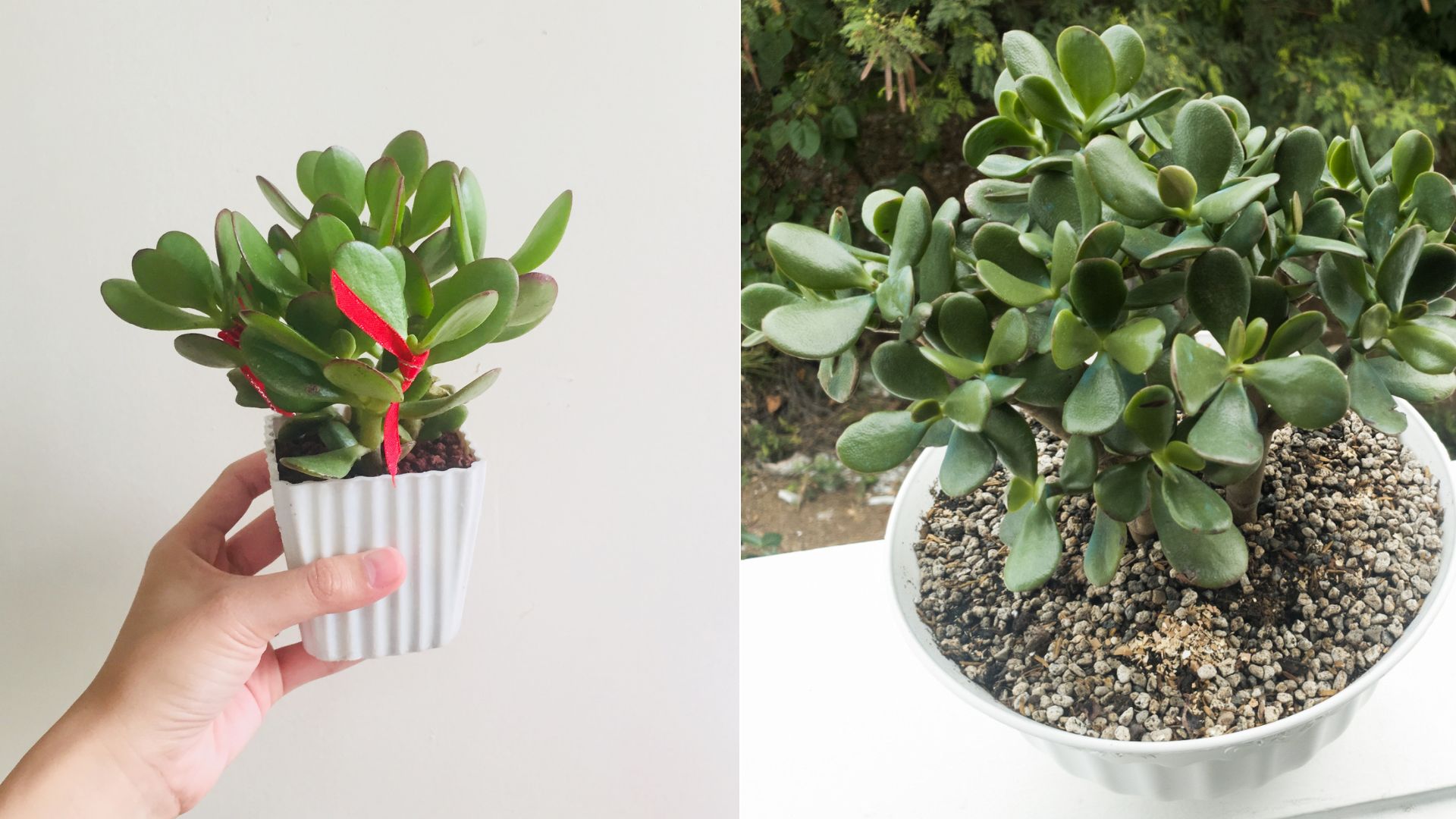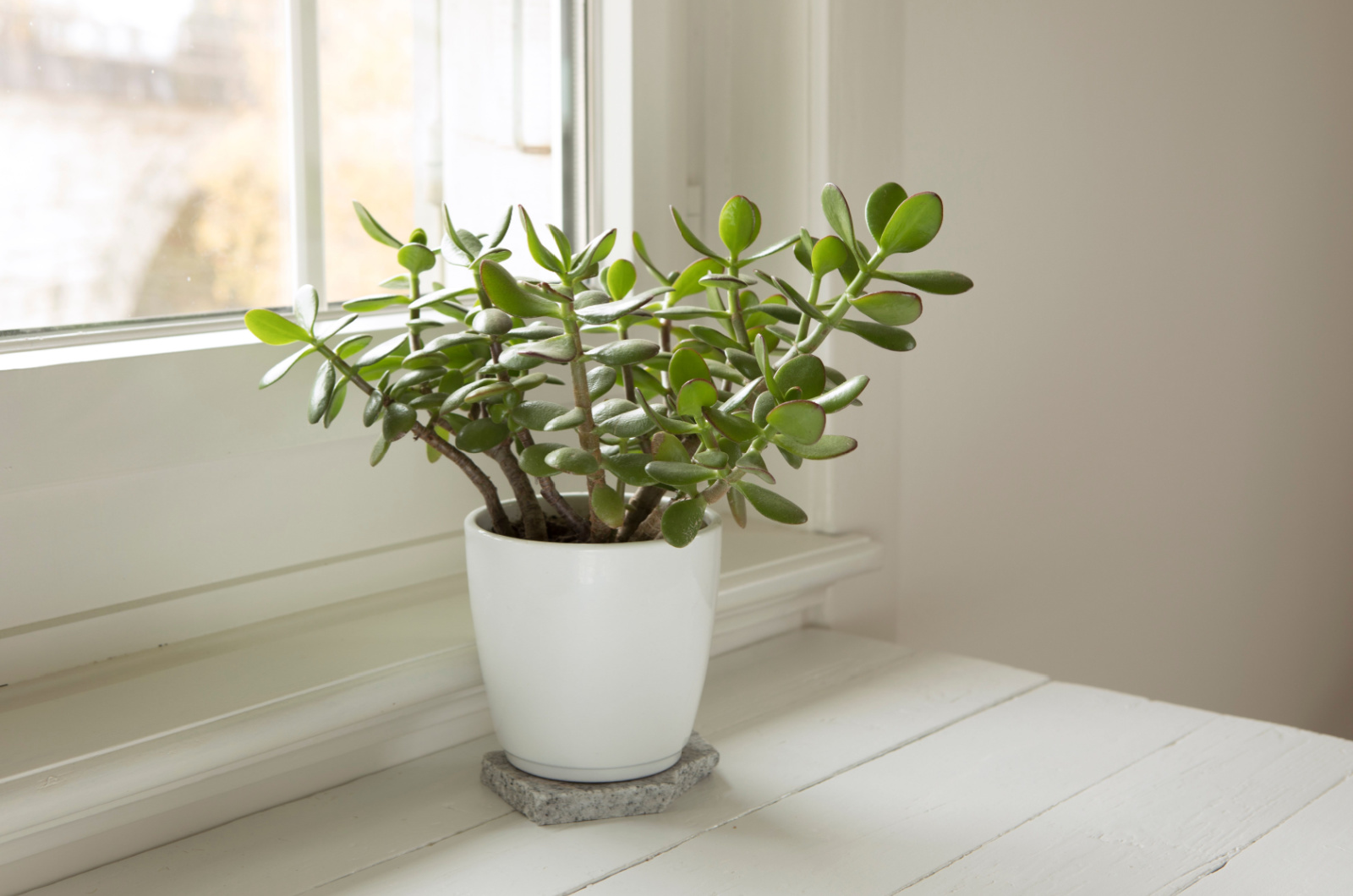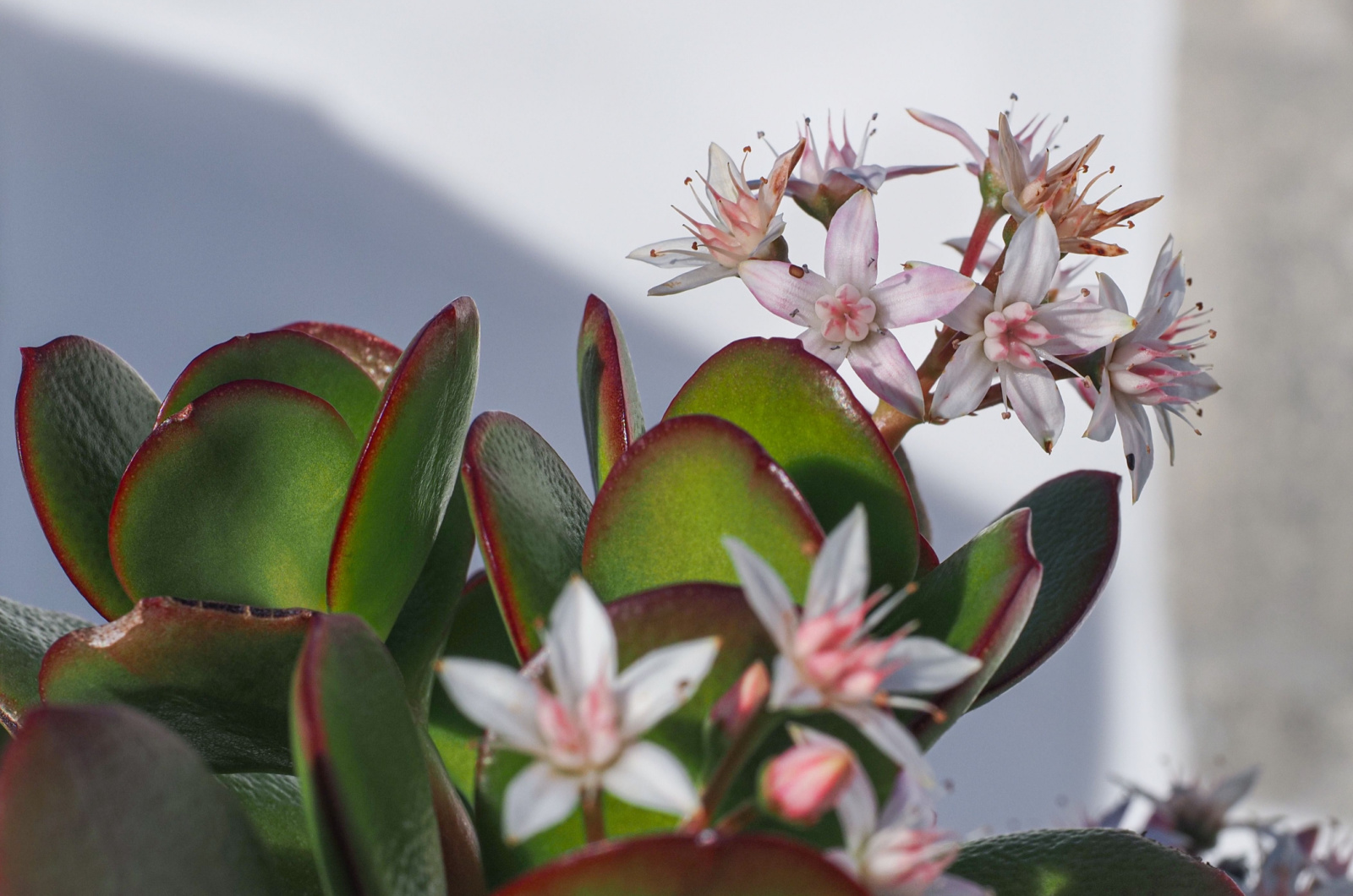Whenever someone asks me about the easiest plant to maintain indoors, I instantly think of the jade plant. Well, I have exactly the same thought when asked about the prettiest.
Stunning woody trunks and fleshy glossy green leaves make this plant look like a tree, which is the main reason why many decide to turn it into a bonsai.
Otherwise known as the Crassula ovata, the jade plant should definitely be a part of every houseplant collection. This is a long-living species and even beginners can keep it happy and healthy without putting in too much effort.
Here are the best jade plant care tips; use them all and your succulent is destined to thrive!
Let’s get started!
How To Care For Jade Plant Grown Indoors
There are many types of jade plants you can grow indoors and each looks simply breathtaking. These plants are native to South Africa, which means they’re accustomed to warm and dry conditions. Only those who live in USDA zones 10 and 11 can keep them outdoors.
Indoor cultivation gives amazing results and the two main things you need to pay attention to are light and water.
All Crassula plants thrive in sunny conditions so you’ll need to find a spot in your home that receives about 4 hours of direct sun. However, from my experience, south-, east-, and west-facing windows all work well for these succulents.
I avoid north-facing windows because lack of light may cause the plant to stretch out, which isn’t really attractive. We refer to this as etiolation in succulents and the best way to avoid it is to ensure enough bright light.
If you don’t have a well-lit spot available, consider using grow lights.
These plants don’t need much water to flourish and, surprisingly, it’s better to keep them dehydrated than overwatered. Overwatering can cause your jade plant to start dropping its leaves, get discolored, deformed, and eventually suffer from root rot.
A rule of thumb is to water your Crassula plants once their soil dries out entirely. This typically occurs every 10 days during the summer but you should never rely on a fixed watering schedule.
Instead, check the soil moisture by sticking your finger in the soil; if it feels wet, wait a few more days. Then give your jade plant a good soak and wait until excess water dries out. Never leave any water in the saucer because it can cause the roots to rot.
Propagating Jade Plants
One of the best things about these succulents is propagation. It’s super easy and you don’t have to be a master gardener to do it successfully.
You can propagate your jade plant using two different methods: seeds and cuttings. Honestly, seed propagation takes too long and requires skill, so there’s really no need to use it unless you like a challenge.
Simply remove a cutting, or more depending on how many plants you want to get, and let it callous over. This process allows the cutting to heal and it lasts for only a few days.
Fill a new pot with succulent soil mix, mist it well, and insert the jade plant cutting in it (make sure to bury the cut end).
Keep the soil moist and expect your Crassula ovata to display new growth in a few weeks.
Do Jade Plants Bloom?
Not many jade plant parents are lucky enough to see the plant in bloom. This really occurs rarely but it is possible.
The blossoms are tiny, fragrant, and come in pinkish-white. If you want to encourage flower production in your jade plant, you’ll need to keep it in a dark and cool spot. The temperature should be around 55 degrees Fahrenheit so it’s best to start this in winter.
Additionally, you’ll need to keep the plant even longer without water. Of course, you won’t leave your Crassula without water entirely. When it displays signs of wilting, add some water.
Is It Toxic To Pets?
The Jade plant does have many benefits, but it also has a drawback. It’s toxic to pets, according to the ASPCA (1), and may lead to serious problems, such as vomiting, excess drooling, incoordination, and depression.
You should keep the plant out of reach and if you notice that your furry friend has consumed any of the jade plant parts, contact the veterinarian immediately.
Follow our simple guidelines and your jade plant will grow healthily and be happy for many years to come!
Happy growing!
References
1. Jade plant. (n.d.). ASPCA. https://www.aspca.org/pet-care/animal-poison-control/toxic-and-non-toxic-plants/jade-plant



